An Ethereum node is a vital part of the Ethereum network, as it contributes to maintaining the decentralized nature of the Ethereum network. It’s essentially a device or computer running software that connects to the Ethereum blockchain, enabling participation in the network’s consensus mechanism. As you can imagine, it’s imperative to have knowledge regarding nodes on Ethereum if you’re a developer looking to dive into Ethereum development. Now, regardless if you’re new to the Web3 space and looking for information regarding what an Ethereum node is, or if you already have the basics covered and simply need guidance in how to set up an Ethereum node, this article is for you!

Overview
We strongly recommend reading this entire article if you are completely new to the “Ethereum node” topic. However, if you already know what blockchain nodes are and how they work, feel free to skip the initial sections and go straight into the “How to Run an Ethereum Node” part. There, you’ll learn how to run an Ethereum node the easy way, and we also recommend you check out Ethereum node use cases below that section. This is where you can explore the powerful Moralis APIs, enabling you to bypass nodes!
All in all, this is the outline of today’s article:
- What is an Ethereum Node
- How Does an Ethereum Node Work
- How to Run an Ethereum Node
- Use Cases for Ethereum Nodes
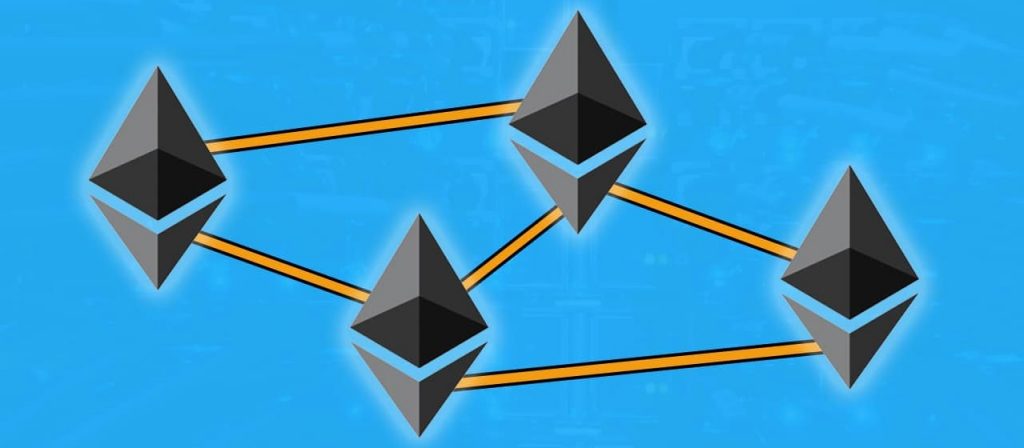
What is an Ethereum Node?
An Ethereum node is the fundamental building block of the Ethereum network. Every node plays a pivotal role in the network’s decentralized architecture. Think of it as a digital sentinel, tirelessly guarding the integrity and functionality of the Ethereum blockchain.
At its core, an Ethereum node is a computer program that operates within the Ethereum network. It performs essential tasks that collectively ensure the network’s robustness and reliability. These tasks include validating transactions, maintaining a copy of the entire Ethereum blockchain, and broadcasting new transactions and blocks to the network.
There are several types of Ethereum nodes, each serving a unique purpose. First, there are full nodes, which are the network’s backbone. Full nodes download and validate every transaction and block, ensuring that the data on the blockchain is consistent and accurate. These nodes contribute to Ethereum’s security by enforcing consensus rules and providing a trustless environment.
On the other hand, light nodes, also known as “light clients”, offer a more lightweight alternative. They don’t store the entire blockchain but rely on full nodes for data when needed. Light nodes are perfect for mobile wallets and applications, as they consume fewer resources.
Running a node is a commitment to the network’s decentralization and security. By doing so, node operators contribute to Ethereum’s resilience against censorship and attacks. They help maintain Ethereum’s distributed ledger, allowing users to interact with the blockchain without relying on centralized intermediaries.
Essentially, an Ethereum node emerges as a cornerstone of the Ethereum landscape. It assumes the mantle of safeguarding both the network’s integrity and its bedrock principle of decentralization. Be it a full node or a light node; each weaves an indispensable thread into the fabric of Ethereum’s ongoing triumph and its enduring legacy of trustworthiness.

Other Types of Nodes
You are probably aware that while Ethereum continues to be the leading programmable blockchain, other similar chains are available. Obviously, these blockchains must maintain their own nodes to run correctly and securely. And, with a few exceptions (e.g., Solana), most of the leading networks follow Ethereum’s example by utilizing the power of Ethereum Virtual Machine (EVM).
Networks following Ethereum’s example are known as EVM-compatible chains (e.g., BNB Smart Chain, Polygon, Fantom, etc.). Accordingly, we can refer to the nodes powering those networks as EVM-compatible nodes, and their purpose and functioning follow the same principles as Ethereum nodes. However, every chain has its own specifics. Thus, it runs its unique nodes.
Even non-EVM-compatible nodes operate in a similar manner to EVM nodes. Consequently, by understanding what the nodes of the leading chain are and how they work, you can apply that knowledge to other EVM-compatible and non-EVM-compatible chains as well.
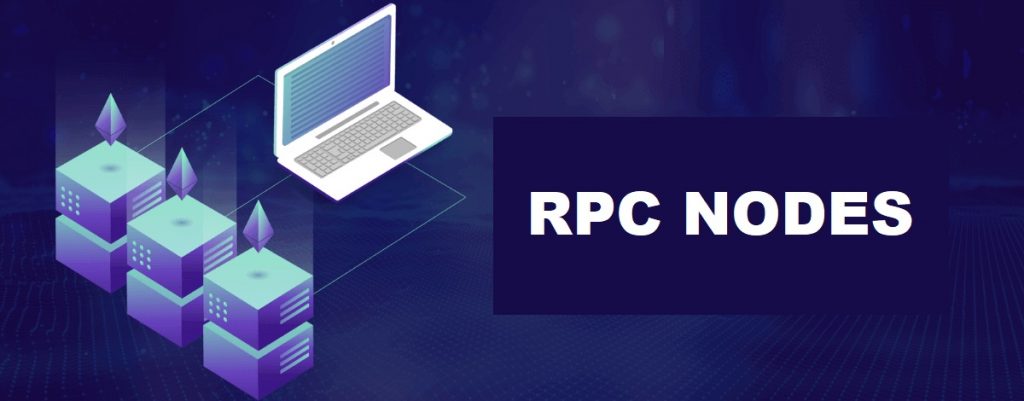
How Does an Ethereum Node Work?
An Ethereum node functions as a decentralized database and communication hub. When a transaction is initiated on the network, it is broadcast to all nodes. The node’s first task is to validate the transaction’s authenticity. It checks digital signatures and ensures they adhere to Ethereum’s protocol rules. This verification process is vital in maintaining the network’s integrity and security.
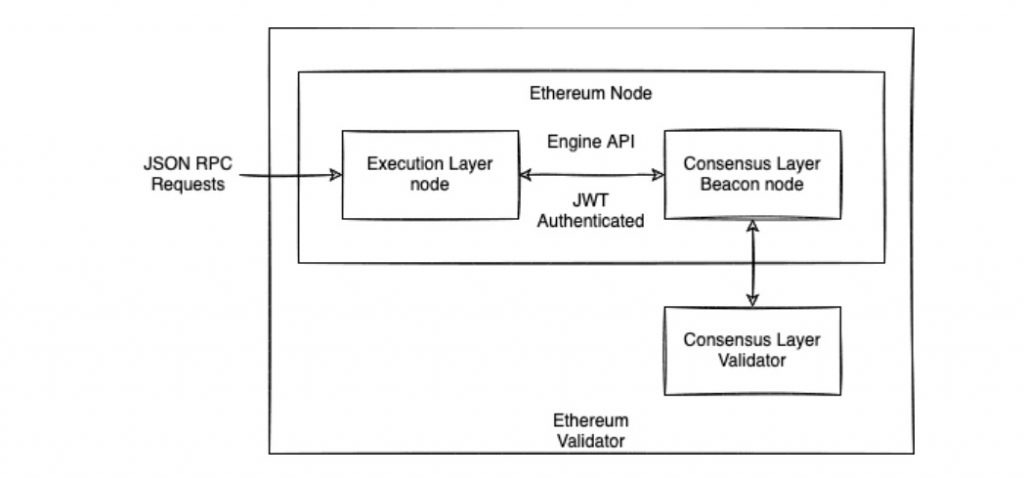
The node incorporates verified transactions into a pool of pending transactions, known as the “mempool”. Network validators, who also operate nodes, draw transactions from this pool to create new blocks. So, the node participates in the consensus mechanism to validate and append new blocks to the blockchain.
Every full Ethereum node maintains a complete copy of the blockchain, which consists of a chain of interconnected blocks containing transaction data. It continuously synchronizes with other nodes, updating its copy of the blockchain to reflect the latest transactions and blocks added to the network. Furthermore, all Ethereum nodes communicate with one another through a peer-to-peer (P2P) network, disseminating transaction and block data efficiently. This ensures that even in the absence of central servers, the network remains robust and resistant to censorship.
How to Run an Ethereum Node
When it comes to running a node, there are a couple of options. The first one, the most direct meaning of “running your own node”, refers to actually setting up an Ethereum client software. And while this is the right path for some users, it is far from the most optimal option for developers.
After all, setting up and running your own node in such a manner requires a lot of time, resources, and technical expertise. It takes commitment and resources that could be spent on development. As such, we don’t recommend this path to those primarily interested in building awesome dapps.
Still, if you want to set up your Ethereum node, we recommend visiting “ethereum.org”. That site offers a dedicated page to help you get going:
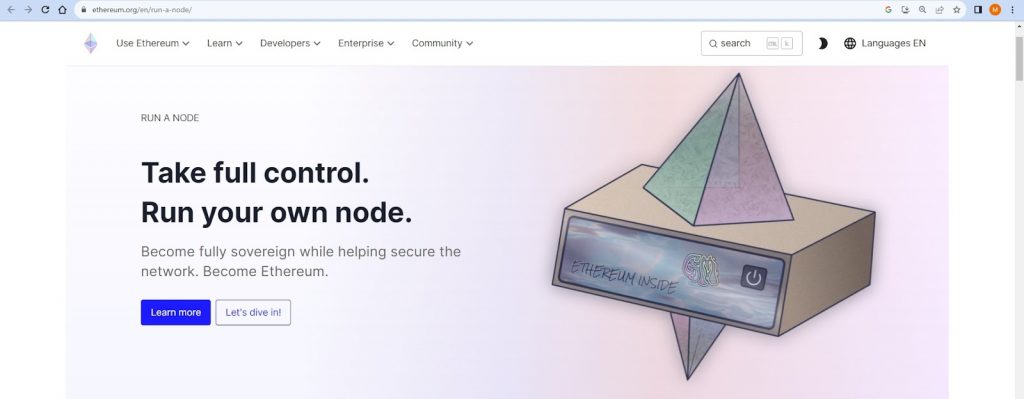
The second interpretation of running a node is a whole lot simpler and faster. In this case, a developer doesn’t have to set up their own node. Instead, they simply plug into one of the nodes offered by a reliable RPC node provider.
You’ll soon learn that, in many cases, you don’t need to take any of the above two options. After all, the power of the Moralis Web3 API allows you to start building dapps without any of the node-related hustle.
Still, you may want to run a node for some particular reason, and you may want to be able to do so not only for Ethereum but for other chains as well. If so, knowing how to easily find a reliable RPC node provider can be valuable. Fortunately, we created a curated list of RPC nodes you can trust and access with no fuss.
Running an RPC Node the Easy Way
So, to run an Ethereum node without actually setting up an actual client, visit the Moralis Nodes page. Once on that page, you’ll get to view an extensive list of RPC nodes for all the biggest Web3 chains. So, simply decide which chain you want to focus on and hit the “Access” button next to that chain.
As you can see in the image below, you can go with an Ethereum node or other RPC nodes:
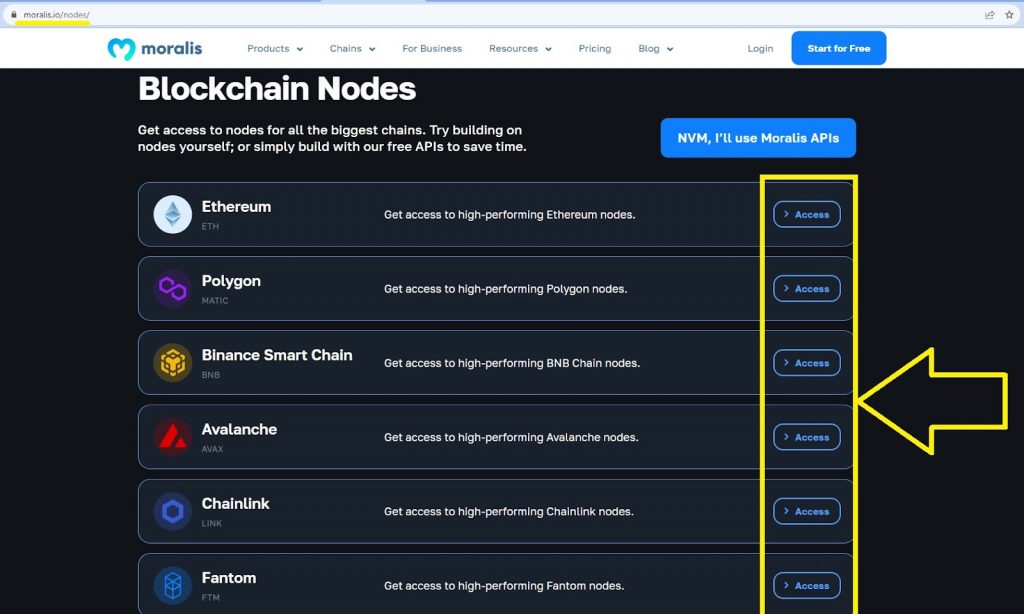
After completing the above-outlined action, you’ll be redirected to a reliable RPC node provider. There, you will get to complete the setup process. The latter starts by signing up for the service by entering your details and creating your account’s password.
You Can Skip Running Nodes Altogether
Of course, whether you can take this additional shortcut presented in this section or not depends on your project’s specific details. So, in case you’re not sure if you need to run your own node or if you can skip that part, make sure to use our support chat. You can access it at any time by hitting the Moralis logo in the bottom-right corner:

However, generally speaking, you can create all sorts of killer dapps without running your Ethereum node or any other RPC node. This is why you can see the “NVM, I’ll use Moralis APIs” button on the Moralis Nodes page.
Essentially, you can skip running nodes altogether when using Moralis Web3 APIs! What’s more, when doing so, you get to save a lot of time and development resources! So, make sure to sign up with Moralis today and start building dapps using Moralis!
By hitting that button, you’ll be redirected to the Moralis Web3 Data page. There, you can learn more about all the powerful Moralis APIs. However, we will outline the gist of them in the following section.
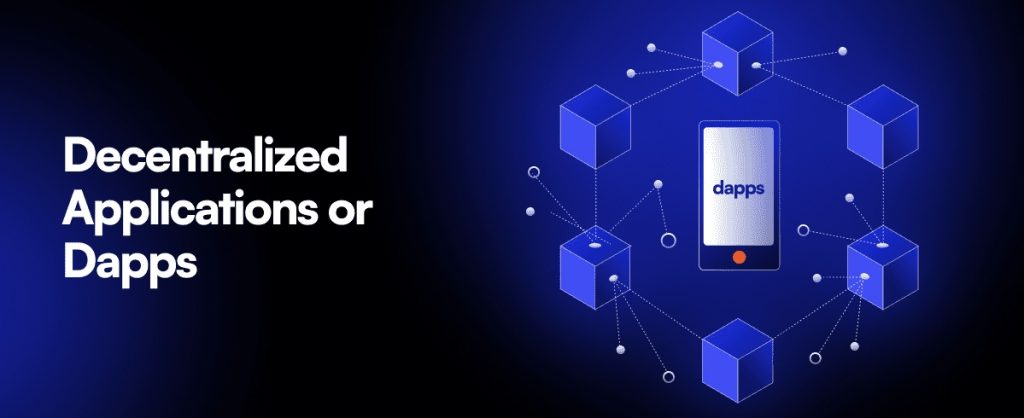
Use Cases for Ethereum Nodes
RPC nodes can be used for a wide range of purposes. For instance, you can run a node to become a network validator or to acquire on-chain data. However, the main attention of most devs is focused on building dapps.
By this point, you know that the simplest way to start building dapps doesn’t even require you to run an Ethereum node. So, thanks to the power of Moralis APIs, you get to save a lot of time and money.
However, even if you decide to run your own RPC node, you’d still want to use powerful Web3 APIs to create dapps. After all, they are the key to creating dapps in a record time by avoiding reinventing the wheel.
As you may know, there are countless repetitive aspects of dapp development. So, instead of wasting time and money on creating solutions for those functionalities, a proper API solves your needs in seconds. Thus, you get to devote your focus to creating the best possible UI and UX, which can be a real game-changer for your dapp.
Some of the most common types of dapps that Web3 devs are building using Ethereum nodes or bypassing them using Moralis APIs are:
- Live price feed sites
- NFT marketplaces
- NFT authentication sites
- Portfolio dapps
- Web3 wallets
- Blockchain explorers
The above are just some of the countless dapp types that you can tackle either with RPC nodes and quality APIs or with Moralis APIs alone.
As such, it makes sense you get familiar with the Moralis API fleet below.
Moralis APIs – Your Ticket to Creating Dapps the Easy Way
- Market Data API – Access information regarding trending NFT collections, top ERC-20 tokens, NFT airdrops, and much more.
- NFT API – Cover all NFT-related aspects of your next big NFT project by accessing enriched metadata, real-time NFT transfer data, NFT ownership data, and much more.
- Price API – The most complete crypto price API on the market to cover all cryptos, from the smallest and newest coins to the largest cryptocurrencies.
- Wallet API – The definitive solution for integrating wallet functionalities into your Web3 dapps with an array of features, exceptional flexibility, and unparalleled scalability.
- Token API – Add real-time token prices, wallet balances, transfers, and liquidity to your dapp effortlessly.
Aside from the above most popular APIs, Moralis also offers its Balance API, Transaction API, Events API, Block API, DeFi API, Resolve API, and EVM API. The latter particularly entails the invaluable advantage of cross-chain compatibility. Moralis already supports most of the leading EVM-compatible chains, with new ones being added on a regular basis.

Nonetheless, keep in mind that Moralis’ product fleet doesn’t end with the ultimate Web3 Data API. Instead, it also includes the Streams API and Auth API. As such, you get to cover real-time, on-chain notifications and Web3 authentication with single lines of code.
All this without the need to run your Ethereum node!
Summary: What is an Ethereum Node and How to Set One Up
In today’s article, you learned that an Ethereum node is a critical component of the Ethereum network. You now know that it functions as a digital guardian that ensures the integrity of the blockchain. These nodes validate transactions, maintain the blockchain, and broadcast new data. You also found out that there are two types: full nodes validate everything, while light nodes rely on full nodes for data.
Running an Ethereum node supports network decentralization and security, but it can be resource-intensive. Thus, many Web3 developers opt for RPC nodes provided by node providers to simplify the process. And you can find great options for all the leading chains on the Moralis Nodes page.
RPC nodes serve various purposes, from network validation to acquiring data for decentralized apps (dapps). However, as a dapp dev, you do not necessarily need to run your nodes. Thanks to Moralis’ wide range of cross-chain compatible Web3 APIs, you can save a ton of time and money when building killer dapps.
Read More: moralis.io








 Bitcoin
Bitcoin  Ethereum
Ethereum  Tether
Tether  XRP
XRP  Solana
Solana  USDC
USDC  Dogecoin
Dogecoin  Cardano
Cardano  TRON
TRON  Lido Staked Ether
Lido Staked Ether  Wrapped Bitcoin
Wrapped Bitcoin  Sui
Sui  Chainlink
Chainlink  Wrapped stETH
Wrapped stETH  Avalanche
Avalanche  Stellar
Stellar  Shiba Inu
Shiba Inu  Hedera
Hedera  Hyperliquid
Hyperliquid  LEO Token
LEO Token  Toncoin
Toncoin  Bitcoin Cash
Bitcoin Cash  Litecoin
Litecoin  Polkadot
Polkadot  USDS
USDS  WETH
WETH  Monero
Monero  Pi Network
Pi Network  Wrapped eETH
Wrapped eETH  Pepe
Pepe  Bitget Token
Bitget Token  Binance Bridged USDT (BNB Smart Chain)
Binance Bridged USDT (BNB Smart Chain)  Ethena USDe
Ethena USDe  Coinbase Wrapped BTC
Coinbase Wrapped BTC  WhiteBIT Coin
WhiteBIT Coin  Uniswap
Uniswap  Bittensor
Bittensor  Dai
Dai  NEAR Protocol
NEAR Protocol  Aptos
Aptos  Aave
Aave  OKB
OKB  Ondo
Ondo  Jito Staked SOL
Jito Staked SOL  Ethereum Classic
Ethereum Classic  Internet Computer
Internet Computer  Tokenize Xchange
Tokenize Xchange  Cronos
Cronos